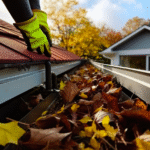Did you know that most garage doors can weigh between 100 and 400 pounds? For families with curious toddlers and adventurous pets, this powerful piece of machinery can pose serious safety risks unless you secure it correctly.
At https://doorsdirect.com.au, we understand these safety concerns. Over the years, we have helped many Brisbane families with garage door installation that meets the highest safety standards.
In this guide, we’ll walk you through practical steps to child-proof and pet-proof your garage door. You’ll also learn how to secure the door with proper sensors and create safe zones around it.
Ready to make your garage a safer space for everyone? Let’s get started.
Contents
How to Test Your Garage Door Sensors
Your garage door’s sensors are your first line of defence against accidents. There are many ways you can perform checks on them. For one, you can check the door opener by placing a small board under the closing door and interrupting the photo-eye beam with your foot.
A quick monthly test like that takes just a few minutes and could save lives. However, most homeowners forget to check these sensors until something goes wrong.
Let’s get into detail on how to check your garage door sensors more thoroughly.
Checking the Auto-Reverse Function
Every modern garage door opener includes a system that automatically reverses a closing door upon contacting an obstruction. You can check if this system is working in three steps:
- Place a Test Object: With your garage door open, lay a 2-inch by 4-inch board flat on the floor in the centre of the garage door opening. Make sure the board is right where the door will make contact.
- Activate the Door: Use your remote or wall control to close the door from a safe distance where you can observe the test.
- Confirm Reversal: The garage door should reverse within 2 seconds when it hits the board. If it doesn’t reverse, stop the door immediately and contact a professional. A faulty auto-reverse could cause serious injury.
Verifying the Photo-Eye Beams
Let’s talk about small photo-eye sensors now. These sensors mount no more than 6 inches from the garage floor and create an invisible infrared beam. Their testing process also consists of three easy steps:
- Check Indicator Lights: If the LED lights on each sensor are constant with no flickers, it means they’re working fine. On the flip side, red or blinking lights indicate misalignment issues that prevent proper safety function.
- Clean the Lenses: You can use a soft cloth to remove dust, spider webs, or debris from sensor lenses. A dusty lens could interfere with the beam and may cause false readings.
- Perform a Test: In this step, you should use your foot or hand to interrupt the invisible beam between sensors while the door is closing. Your action should stop the door and reverse immediately. However, if the door continues closing, contact professionals immediately for a repair.
Setting Garage Rules for Pets and Kids
Technology alone isn’t enough to keep your family safe around garage doors. You need to establish clear rules and habits, too, to prevent accidents. As you know already, your garage door weighs hundreds of pounds and has multiple moving parts that can cause serious injury or even death.
In our experience, most accidents happen when people aren’t aware of safety rules. So you can prevent your kids from hurting themselves simply by explaining how the garage door works. You may also warn them about playing around the garage door to avoid any problems.
Don’t know where to start? Here are some tips for you on how to set garage rules for your kids and pets.
Creating a Clear ‘No-Play Zone’
We’re sure that as a parent, you’ve seen your kids playing around where they shouldn’t, even if you asked them not to. Your children and pets should never run, play, or stand near the garage door while it’s opening or closing.
The area directly under and around the garage door’s path must become a strict no-play zone. For that, you can use coloured tape on the floor to mark “safe zones” for younger kids. Plus, if you explain to your children what this visual boundary means, it’ll further help them understand that this is heavy machinery and not playground equipment.
And about your pets, they may learn to avoid certain areas through training and repetition. Even then, they do require more safety measures than children (they’re animals, after all!). Their safety measures include you using a leash on them while around the garage door, and teaching them “wait” and “stay” commands.
Pro-Tip: Children typically love to hang on to things. So, communicate clearly that they should never hang or “ride” on the garage door.
Securing All Activation Controls
Young children love pushing buttons, but they should never touch the garage door opener or keypad. That’s why you must keep remote controls out of your children’s reach.
For instance, you can use a high wall control so your kids won’t be able to open the garage door and wander out.
Teaching Kids on Door Movement Awareness
Here’s the thing… children learn from their surroundings. They see what others do and pick it up. With that in mind, you need to build a habit of not entering or leaving the garage until the door fully opens or closes. This way, your children will know what to do and what not to do.
Also, kids are curious by nature. You can be sure that they’re always wondering how the garage door works. But, why not use their curiosity to instil awareness in them?
So, show them what the garage door springs look like and explain that they should never touch them. That’s how your kids will understand that the garage door is off-limits. And if they still don’t comply, you can keep your garage’s access door locked.
A Guide to Full Garage Safety Checks
While sensor tests and rules are necessary, don’t forget about the physical condition of the door’s hardware. Perform these regular checks to catch issues before they become serious safety hazards:
- Inspect the Hardware: Visually check the door’s springs, cables, rollers, and pulleys. Look for signs of fraying, rust, or other damage in these areas. When these cables fray or wear out, they’re in danger of breaking, which results in serious injuries.
- Test the Door Balance: With the door closed, pull the manual release cord. You should then be able to lift the door smoothly by hand with little resistance. Heavy doors indicate springs may need professional adjustment.
- Assess the Manual Release: The manual emergency release cord is the red rope that hangs from the door trolley. Everyone in your family should know how to use it in emergencies. That’s why you need to give them refreshers once every two or three months on their usage.
- Organise the Surrounding Area: You must keep the area around garage doors clear of toys, bicycles, lawnmowers, and other objects. It’s because clear floors prevent trip hazards that sensors cannot detect.
Your Family’s Safety Starts Today
Garage door accidents happen more often than most families realise. However, with the right safety measures and regular maintenance, you can ensure that your garage stays a secure space for everyone.
In this article, we’ve explored three important safety elements for your garage doors: monthly sensor testing, establishing clear household rules for children and pets, and conducting regular hardware inspections to catch problems before they become dangerous.
Doors Direct specialises in family-safe garage door solutions across Brisbane. Contact us today to schedule your comprehensive garage door safety assessment and protect your family.


